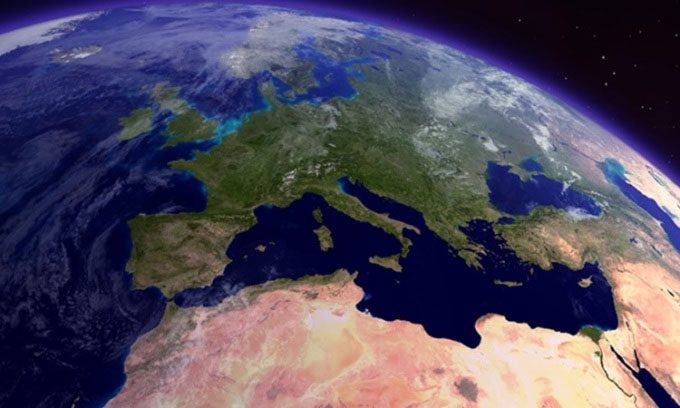As the African and Eurasian tectonic plates slowly collide, a portion of the Earth’s crust lies inverted deep beneath the Mediterranean Sea.
Spain frequently experiences unusual deep earthquakes. A new study published in The Seismic Record suggests that the cause may be related to the inverted tectonic plate, as reported by Science Alert on February 29. Since 1954, there have been five significant earthquakes clustered closely together at depths exceeding 600 kilometers beneath the city of Granada, Spain, according to geologists Daoyuan Sun from the University of Science and Technology of China and Meghan Miller from the Australian National University. Earthquakes at such depths are typically accompanied by strong aftershocks. However, when Sun and Miller examined seismic data from the 2010 earthquake in Spain, they found no aftershocks.

The inverted tectonic plate located deep beneath the Mediterranean Sea. (Photo: Bob Hemphill)
When two tectonic plates collide, they often shift, causing one plate to slide beneath the other in a process known as subduction. Sometimes, this collision destroys the subducting part of the tectonic plate, pushing the crust upward to form mountains, thus merging the two tectonic plates into one. In other cases, the two tectonic plates remain separate and stack on top of each other, with one plate gradually descending deeper into the Earth’s mantle. This is what occurs at the boundary between the African and Eurasian tectonic plates, as the floor of the Mediterranean gradually sinks beneath Europe.
The subducting plate forms silicate magnesium that contains water in its upper layer when it comes into contact with ocean water. As the tectonic plate subducts, the silicate compound loses water and becomes more brittle, making it more susceptible to earthquakes and causing seismic waves to slow down in a manner that seismologists can detect. The seismic waves from the 2010 Granada earthquake were unusually prolonged and featured additional activity at the end. This can be explained by the seismic waves moving slower in the bottom layer of the Alboran plate rather than above it.
“A significant amount of water is being transported to the transition zone into the mantle, indicating that the tectonic plate is relatively cold,” Sun explained. “Given the relatively young seabed in the western Mediterranean, for that plate to remain cold, the rate of subduction must be quite fast, around 70 millimeters per year.”
It appears that the rapid subduction of the tectonic plate causes the Earth’s crust in this area to become inverted, along with a pocket of water. The inversion process occurs when gravity pulls the tectonic plate downward in a vertical orientation. The new study concludes that the crust has been completely inverted, causing the section with silicate compounds to face downward, leading to a strangely complex tectonic structure in the region and earthquakes at depths exceeding 600 kilometers.


















































